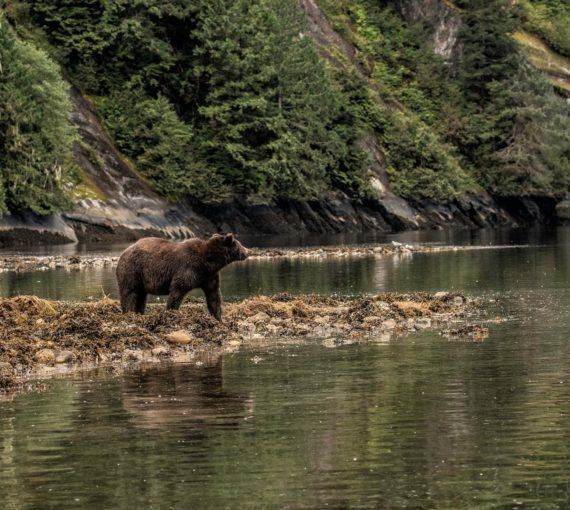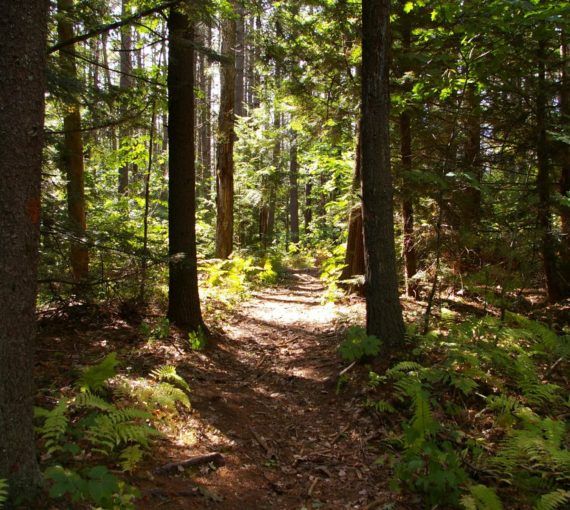
What needs to change so that Canada’s industrial resource extraction activities can truly be part of a circular economy? (Photo: Max P via Flickr)
Many people are calling for a just, green recovery from the COVID-19 pandemic. Investing in natural solutions to climate change, restoring damaged and fragmented ecosystems, strengthening the social safety net and rethinking flawed economic systems would make us more resilient to current and future crises.
One concept that could help us shift to ecologically sound economic systems is the “circular economy,” in which the need to extract resources from undeveloped natural ecosystems is significantly reduced or even eliminated. It involves shifting from a take-make-waste society to one where repairing, reusing and repurposing become standard.
When a new phrase or concept is introduced to capture a vision of a better world, industrial interests often co-opt it, attempting to portray themselves as “green.” That’s what the Forestry Products Association of Canada is doing in its response to a report calling into question the vast amounts of boreal forest pulped for toilet paper. The industry group claims forestry in Canada is “part of the circular economy.”
It’s true that in modern mills most harvested trees are used for a variety of products. And it’s true that forests are renewable, in the sense that trees can be cut down and new ones planted. But forests that have been logged and regenerated are vastly different from forests untouched by industrial management.
As industry favours economical tree species, natural forest composition is altered.
Roads and landings where timber is piled and collected can leave permanent, cumulative scars. Trees are harvested before reaching old growth stages, which disrupts provision of habitat and forest nutrient cycles. As industry favours economical tree species, natural forest composition is altered. These practices lead to forest degradation and diminished ecosystem functioning.
Industrial disturbance is also a main driver of the decline of boreal woodland caribou, which are threatened with extinction in Canada. Caribou are an umbrella species that depend on unfragmented forests.
In essence, a circular economy is about ensuring that we live within Earth’s finite limits — the limits within which today’s needs can be met without sacrificing the ability of future generations, including future generations of wildlife, to have their needs met.
With few exceptions, forestry operators and provinces have ignored this directive, and caribou populations continue to drop in Canada’s boreal forest.
Caribou decline is an indicator that ecological limits have been surpassed. In 2012, the federal government directed provinces to limit the amount of forest disturbance in boreal caribou ranges to a maximum of 35 per cent, which would give caribou a mere 60 per cent chance of survival. With few exceptions, forestry operators and provinces have ignored this directive, and caribou populations continue to drop in Canada’s boreal forest.
What needs to change so that Canada’s industrial resource extraction activities can truly be part of a circular economy?
First, limits must be set on the boundaries of industrial activities. Cutting down forests that have never been logged to produce more toilet paper, packaging and other paper products we barely recycle can never be circular, let alone sustainable. The ever-increasing expansion into unfragmented forests must be curtailed. Governments and industry must renew efforts to protect suitable habitat for imperilled wildlife, restore forests where levels of disturbance have driven wildlife decline and find innovative ways to harvest in areas that have already been cut.
Canada is the world’s largest producer of newsprint and northern bleached softwood kraft pulp, a raw material for making paper products. A 2020 draft forest sector strategy for Ontario projects a 35 per cent increase in tissue production and a 25 per cent increase in packaging. The life cycle of forest-based products must be rethought, redesigned and transformed.
We must also redefine the core purpose of our forestry sector from one driven by how quickly it can cut down forests for profit to one that rewards operators for cutting less and producing better products. A true circular economy grows qualities (such as healthy, diverse forests) over time without the need to keep growing quantities (such as number of trees logged) — better, not more.
It doesn’t make sense to destroy much-needed habitat for single-use products such as toilet paper when recycled toilet paper and other alternatives can meet our needs. Consumers and producers need to rethink products and packaging.
Canada’s logging industry might use wood chips and circular saws, but it can’t be considered part of a circular economy until it transforms itself with circular principles at its core.



